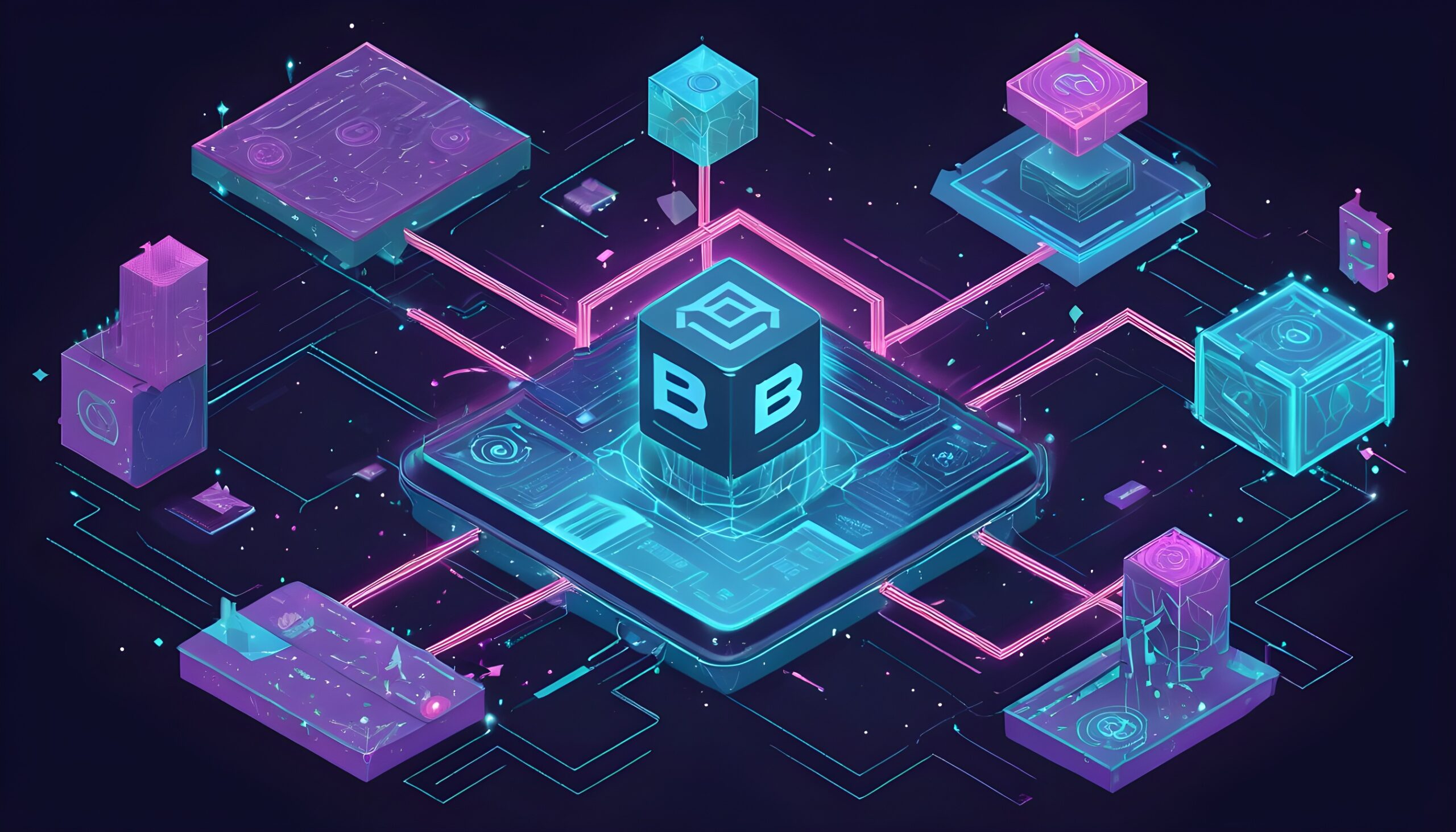In the rapidly evolving landscape of blockchain technology, the pursuit of scalability has been a constant challenge. As the number of users and transactions on blockchain networks continues to grow, the need for efficient and decentralized solutions becomes increasingly crucial. Enter decentralized sequencers – a groundbreaking innovation that promises to address the scalability trilemma while preserving the core principles of decentralization and security. But what exactly are decentralized sequencers, and how do they work? Let’s dive into this exciting development and explore its potential impact on the future of blockchain ecosystems.
Understanding the Scalability Trilemma
Before delving into the world of decentralized sequencers, it’s essential to understand the scalability trilemma – a fundamental challenge faced by blockchain networks. The scalability trilemma posits that it is difficult to achieve all three desired properties of scalability, decentralization, and security simultaneously in a blockchain system.
Scalability refers to the ability of a blockchain network to handle a large number of transactions efficiently and without significant delays or bottlenecks. Decentralization is a core tenet of blockchain technology, ensuring that no single entity has control over the network and that decision-making is distributed among participants. Security, on the other hand, is crucial for maintaining the integrity and immutability of the blockchain, protecting it from malicious attacks and ensuring the validity of transactions.
Traditional blockchain networks, like Bitcoin and Ethereum, have struggled to achieve all three properties simultaneously. Bitcoin, for instance, prioritizes decentralization and security but suffers from limited scalability, with a relatively low transaction throughput. Ethereum, while more scalable than Bitcoin, still faces challenges in handling high transaction volumes during periods of network congestion.
The Rise of Layer-2 Solutions
To address the scalability trilemma, various Layer-2 solutions have emerged, aiming to offload some of the computational workload from the main blockchain (Layer-1) while maintaining the security and decentralization properties of the underlying network. These solutions include state channels, plasma chains, and rollups, each with its own approach to improving scalability.
Among these Layer-2 solutions, rollups have gained significant traction due to their ability to bundle and compress transactions before submitting them to the main chain. This process reduces the data footprint and computational requirements, enabling faster and more efficient transaction processing.
However, even within the realm of rollups, there are different implementations, and one particularly promising approach is the use of decentralized sequencers.
What are Decentralized Sequencers?
Decentralized sequencers are a key component of a specific type of rollup solution known as a ZK-Rollup (Zero-Knowledge Rollup). In a ZK-Rollup system, transactions are batched, compressed using zero-knowledge proofs, and then submitted to the main chain as a single transaction.
The sequencer plays a crucial role in this process by ordering and bundling the transactions into batches before they are compressed and submitted to the main chain. Traditionally, sequencers have been centralized entities, which introduced potential bottlenecks and single points of failure, potentially compromising the decentralization aspect of the blockchain ecosystem.
Decentralized sequencers aim to address this potential vulnerability by distributing the sequencing process across multiple nodes or participants, eliminating the need for a single, centralized entity. This decentralized approach ensures that no single party has control over the ordering and bundling of transactions, enhancing the overall security and robustness of the system.
How Decentralized Sequencers Work
The functionality of decentralized sequencers varies depending on the specific implementation, but the general principle involves a distributed network of nodes or participants collaborating to order and bundle transactions.
One approach is to use a consensus mechanism, such as a variant of the Byzantine Fault Tolerance (BFT) protocol, to achieve agreement among the participants on the correct order of transactions. In this model, each participant proposes a batch of transactions, and the consensus protocol ensures that all honest nodes converge on the same sequence, even in the presence of faulty or malicious nodes.
Another method involves leveraging cryptographic techniques like threshold signatures or multi-party computation (MPC). In this scenario, the sequencing process is distributed among multiple parties, each contributing a partial signature or computation. Only when a sufficient number of parties collaborate can the transaction batch be finalized and submitted to the main chain.
Regardless of the specific implementation details, the core idea behind decentralized sequencers is to distribute the sequencing process across a network of nodes or participants, ensuring that no single entity has control over the ordering and bundling of transactions.
Benefits of Decentralized Sequencers
The advent of decentralized sequencers brings several potential benefits to blockchain ecosystems, particularly in addressing the scalability trilemma while maintaining decentralization and security:
- Improved Scalability: By efficiently bundling and compressing transactions, decentralized sequencers enable higher transaction throughput and reduced data footprint on the main chain. This scalability enhancement is crucial for supporting the growing demand for blockchain applications and accommodating a larger user base.
- Increased Decentralization: Unlike centralized sequencers, decentralized sequencers distribute the sequencing process across multiple nodes or participants, mitigating the risk of a single point of failure or control. This decentralized approach aligns with the core principles of blockchain technology and ensures that no single entity can manipulate or censor transactions.
- Enhanced Security: The decentralized nature of these sequencers makes them more resilient to attacks or failures, as the system can continue functioning even if a subset of nodes becomes unavailable or compromised. Additionally, the use of cryptographic techniques like threshold signatures or MPC further enhances the security of the sequencing process.
- Trustless and Permissionless: Decentralized sequencers operate in a trustless and permissionless manner, allowing anyone to participate in the sequencing process without requiring permission or trust in a centralized authority. This openness fosters innovation and encourages a diverse ecosystem of participants.
- Compatibility with Existing Blockchain Networks: Decentralized sequencers can be implemented as Layer-2 solutions on top of existing blockchain networks, such as Ethereum. This compatibility allows for seamless integration and enables existing ecosystems to benefit from improved scalability without requiring significant changes to the underlying blockchain architecture.
Challenges and Considerations
While decentralized sequencers offer promising solutions to the scalability trilemma, their implementation and adoption are not without challenges and considerations:
- Complexity and Technical Hurdles: The decentralized nature of these sequencers introduces additional complexity in terms of coordination, consensus mechanisms, and cryptographic techniques. Ensuring the correct implementation and security of these systems can be a technical challenge, requiring expertise and rigorous testing.
- Incentive Mechanisms: To ensure the long-term sustainability and participation of sequencer nodes, robust incentive mechanisms must be designed and implemented. These mechanisms should incentivize honest behavior and disincentivize malicious or lazy participants, aligning the interests of all parties involved.
- Governance and Decision-Making: As decentralized sequencers involve multiple participants, establishing effective governance frameworks and decision-making processes becomes crucial. Clear guidelines and protocols must be defined to address potential conflicts, upgrades, and changes to the system.
- User Experience and Adoption: While decentralized sequencers aim to improve scalability and transaction throughput, it is essential to ensure that the user experience remains seamless and intuitive. Developers and projects leveraging these solutions must prioritize user-friendliness and ease of adoption to foster widespread adoption.
- Regulatory Landscape: As with any emerging technology in the blockchain space, the regulatory landscape surrounding decentralized sequencers remains uncertain. Ongoing discussions and collaboration with regulatory bodies will be necessary to ensure compliance and address potential legal or regulatory concerns.
The Road Ahead: Unleashing the Potential of Decentralized Sequencers
The development and implementation of decentralized sequencers represent a significant milestone in the quest for scalable and decentralized blockchain ecosystems. By addressing the scalability trilemma while preserving the core principles of decentralization and security, these innovative solutions have the potential to unlock new possibilities and drive widespread adoption of blockchain technology.
However, the journey towards fully realizing the potential of decentralized sequencers is still in its early stages, and ongoing research, collaboration, and iteration will be essential. Developers, researchers, and industry stakeholders must work together to refine the underlying technologies, establish robust governance frameworks, and design effective incentive mechanisms.
Additionally, fostering a collaborative and inclusive ecosystem will be crucial for the successful adoption and deployment of decentralized sequencers. Open-source initiatives, knowledge-sharing platforms, and community-driven efforts can accelerate innovation and ensure that these solutions are accessible to a wide range of projects and developers.
As the blockchain landscape continues to evolve, decentralized sequencers may pave the way for a new generation of scalable and decentralized applications, revolutionizing industries such as finance, supply chain management, and digital identity. By overcoming the scalability bottlenecks that have hindered the mainstream adoption of blockchain technology, decentralized sequencers could catalyze a paradigm shift, enabling the creation of truly decentralized and trustless systems that empower users and promote transparency and security.
While the road ahead may be filled with challenges and complexities, the potential rewards of successfully implementing decentralized sequencers are immense. By unlocking the scalability of blockchain networks while preserving their core principles, these innovative solutions could usher in a new era of decentralized applications and services, reshaping the way we interact, transact, and collaborate in the digital realm.





